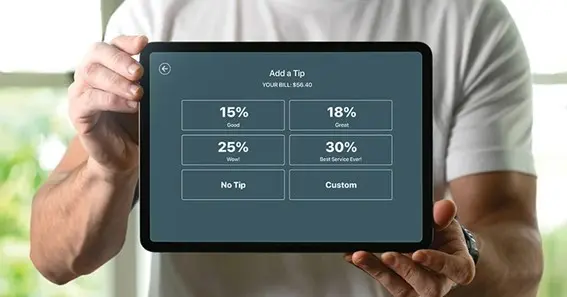In recent years, the “Leave a Tip” screen has become a common feature in various service industries, prompting customers to add gratuity during digital transactions. This shift from traditional tipping methods to digital prompts has sparked discussions about tipping etiquette, consumer expectations, and the psychology behind these prompts.
The Rise Of Digital Tipping Screens
The integration of digital payment systems in businesses has led to the widespread adoption of tipping screens. These prompts often suggest predetermined tip percentages, typically ranging from 15% to 25%, and appear during the checkout process. While initially prevalent in the food and beverage industry, digital tipping screens have expanded to various sectors, including retail and personal services.
Impact On Consumer Behavior
The presence of a “Leave a Tip” screen can influence consumer behavior in several ways:
- Social Pressure: Customers may feel compelled to tip due to the visibility of the prompt and the presence of service staff during the transaction.
- Tipflation: The suggested tip amounts on digital screens are sometimes higher than traditional norms, leading to a phenomenon known as “tipflation,” where consumers feel pressured to tip more than they might have previously.
- Tip Creep: The expansion of tipping prompts into non-traditional industries has caused confusion and frustration among consumers, as they encounter tipping requests in unexpected contexts.
Understanding Tipping Etiquette In The Digital Age
Navigating the “Leave a Tip” screen requires an understanding of modern tipping etiquette:
- Assess the Service: Consider the level of service provided. For instance, tipping is customary in full-service restaurants but may not be expected in self-service or retail environments.
- Personal Comfort: It’s acceptable to tip according to your comfort level and the quality of service received. Don’t feel obligated to adhere strictly to suggested amounts.
- Transparency: Businesses should clearly communicate tipping policies to avoid customer confusion and ensure transparency in compensation practices.
The Psychology Behind Tipping Screens
Digital tipping prompts leverage psychological principles to encourage gratuity:
- Anchoring Effect: Suggested tip amounts serve as anchors, influencing customers’ perceptions of appropriate tipping levels.
- Guilt and Reciprocity: The immediate prompt to tip can evoke feelings of guilt or a sense of obligation to reciprocate, especially when service staff are present during the transaction.
FAQ
-
Why are digital tipping screens becoming more common?
- The rise of digital payment systems has facilitated the integration of tipping prompts, making it easier for businesses to suggest gratuity during transactions.
-
Am I obligated to tip when prompted by a digital screen?
- No, tipping is discretionary. You should tip based on the quality of service and your personal comfort level.
-
What is “tipflation”?
- “Tipflation” refers to the increase in suggested tip amounts on digital screens, often exceeding traditional tipping norms, leading consumers to feel pressured to tip more.
-
How should I handle tipping prompts in non-traditional settings?
- Evaluate the context and level of service. In settings where tipping isn’t customary, it’s acceptable to decline.
-
Can I customize the tip amount on digital screens?
- Yes, most digital tipping screens allow you to enter a custom tip amount, enabling you to tip according to your preference.








